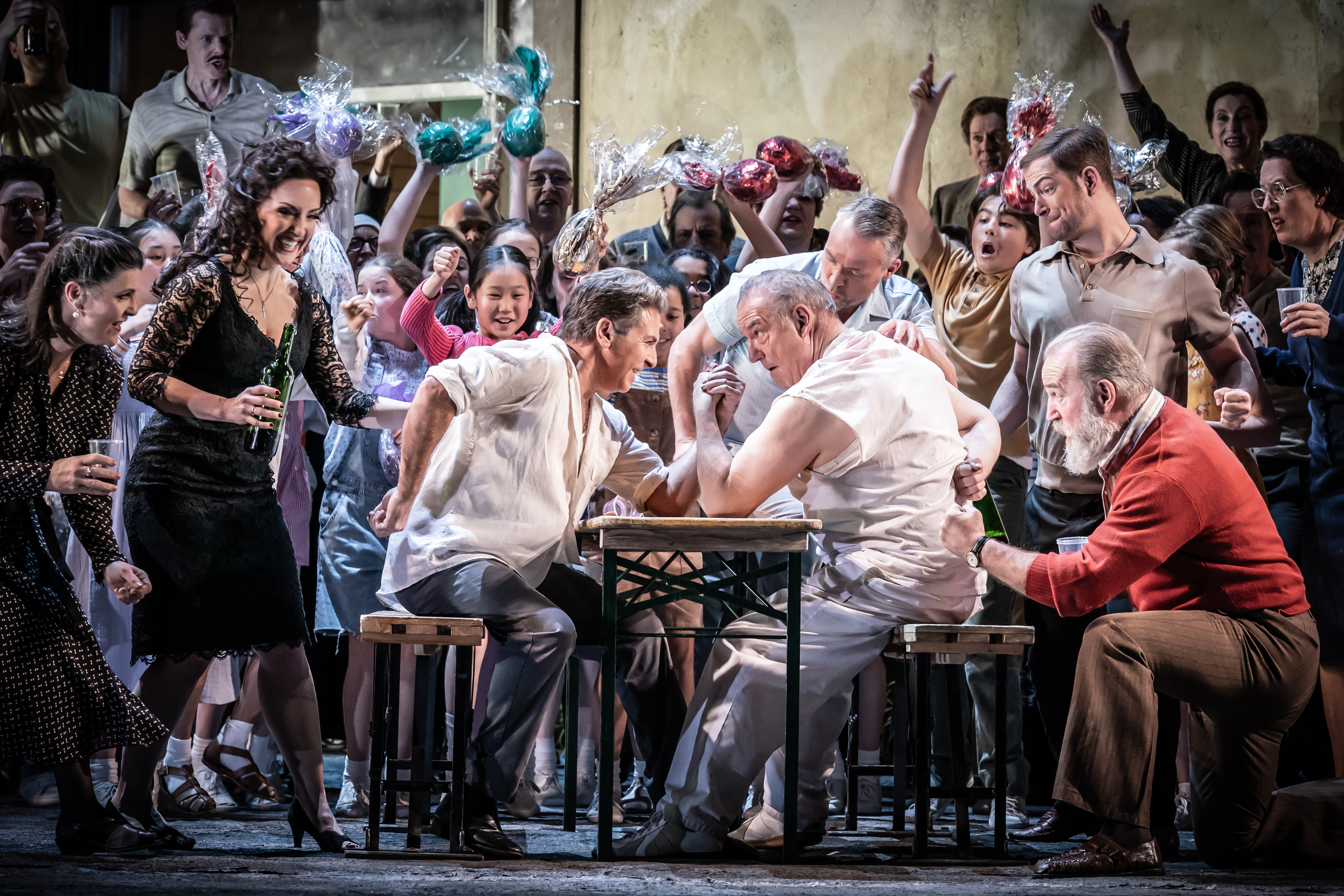Cavalleria Rusticana and Pagliacci review: Any opera fan should see Covent Garden’s heavenly Christmas offering
This double bill of earthy Italian realism at the Royal Opera House is the most brilliant show in town by a mile

Covent Garden’s Christmas offering is everyone’s favourite double bill, even though these twin peaks of verismo – earthy Italian realism – were not designed to be yoked together. But Damiano Michieletto’s production of Mascagni’s Cavalleria Rusticana with Leoncavallo’s Pagliacci – universally known as “Cav and Pag” – finds an easy congruence between them.
Both are set in dirt-poor south Italian villages; the adulterer in Cavalleria dies in a duel at the hand of the man he has wronged, while the adulterous couple in Pagliacci are knifed to death when their play-within-a-play turns real.
The long orchestral introduction in Cavalleria allows Michieletto plenty of time to establish the reality of his Sicilian village, its inhabitants, and its endemic curse of violence. A motionless crowd stands around a murdered man while his mother grieves over him, then Paolo Fantin’s handsome set, with a fully functioning bakery at its heart, starts to slowly revolve, and the first of these two tales of love, sex, jealousy and revenge is set in motion.
Initially, we don’t realise that that opening tableau is a flash-forward. But when a villager puts up posters for a show called Pagliacci we realise that the link between the two stories is umbilical. The church-hall setting of the second opera is delineated with finesse, and the large cast is controlled by revival director Noa Naamat with a wonderfully sure touch. Ingenious lighting and back-stage/front-stage intercutting luridly illustrate the growing disturbance in the mind of the cuckold.
Now that this double production is properly bedded in, we see that it really is a masterpiece of staging. Yet since the two halves are so rich in ideas, and so different in artistic intention, it seems a pity to juxtapose them, for all their surface similarities, with a mere half-hour interval in between. “Cav” is human nature red in tooth and claw, while “Pag” plays games with illusion and reality; “Cav” sits firmly in the 19th-century Romantic musical tradition, while “Pag” strains towards 20th-century musical modernism.

But with this production – and this cast – we are vocally and dramatically in heaven. I can’t remember a time when I was so helplessly gripped by la condition humaine as I was by this version of Cavalleria Rusticana.
It must surely help that Aleksandra Kurzak and Roberto Alagna are man and wife in real life, but their onstage incarnation of the boiling relationship between the wronged Santuzza and her amorous tormentor Turiddu rings absolutely true. Kurzak’s timbre has a lovely flexible fullness, while Alagna wields his glinting steel-edged sound like a weapon; his remorseful despair at the close is palpable.
There’s no weak vocal link in either of these two village tragedies. Rachael Wilson’s darker timbre suits her incarnation as the rival for Turiddu’s affections. Meanwhile Anna Princeva, as the love interest in Pagliacci, is as teasingly seductive as could be wished, and Jorge de Leon, in the title role, delivers his great “sad clown” aria with moving grace. The forceful Dimitri Platanias, doubling as the cuckold in Cavalleria and as a spurned suitor in Pagliacci, is the hero of the evening.
As there are more subtleties to savour in this double-bill than can comfortably be absorbed on a first viewing, I’ll be back soon to see it again
Under the direction of Daniel Oren, the orchestra and chorus play and sing their hearts out. Never for a moment are we allowed to lose the sense of place conjured up by these perfect productions. Nor do we lose the feeling that the villagers singing Easter hymns in church, and the hordes of children processing through the streets with their statue of the Virgin, are all real, not actors. And we feel the heat of the Mediterranean sun.
As there are more subtleties to savour in this double-bill than can comfortably be absorbed on a first viewing, I’ll be back soon to see it again. And I would urge anyone with even the slightest interest in opera to get along too. It must be, by a mile, the most brilliant show in town.
Royal Opera House, until 15 December



Join our commenting forum
Join thought-provoking conversations, follow other Independent readers and see their replies
Comments